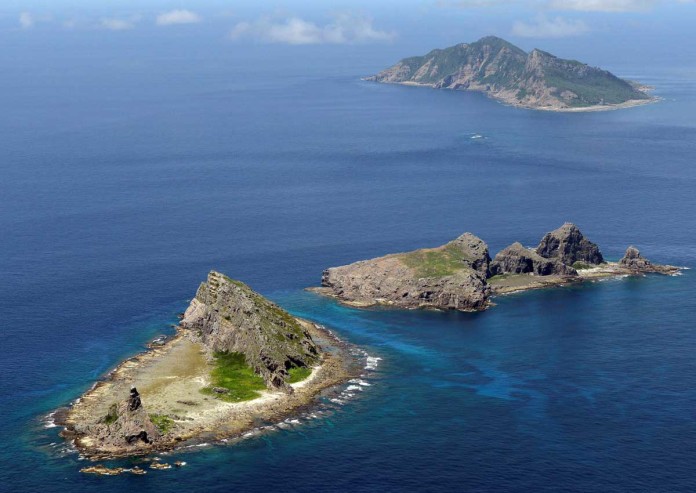TOKYO – A Chinese Navy vessel has sailed into the contiguous zone outside Japanese territorial waters around the Senkaku Islands in Okinawa Prefecture for the first time, the government announced early Thursday.
Update: There was a typo in the heading in earlier version of the same.
The government summoned Chinese Ambassador to Japan Cheng Yonghua to the Foreign Ministry, where Vice Foreign Minister Akitaka Saiki lodged a strong protest against China.
The Chinese warship did not enter Japanese territorial waters. It left the contiguous zone at about 3:10 a.m. after staying there for about two hours and 20 minutes.
According to the government, three Russian Navy vessels also sailed into the contiguous zone before the Chinese warship entered the area.
Some government officials believe the Chinese warship entered the contiguous zone to counter the entry by a Maritime Self-Defence Force (MSDF) vessel, which was chasing the Russian Navy vessels.
The government will remain on alert and continue to monitor the two countries’ naval vessels. The government is also analysing the intention of the two countries’ navies to see if there is any connection between their movements.
According to the Defence Ministry, MSDF destroyer Setogiri saw that a Jiangkai-I Class frigate of the Chinese Navy had entered the contiguous zone at a point northeast of Kubajima island, part of the Senkaku Islands, at about 12:50 a.m. on Thursday.
This was the first confirmation that a Chinese Navy vessel has entered the contiguous zone around the Senkaku Islands.
In response to the move by the 3,963-ton Chinese warship, the government set up a liaison office at the crisis management centre in the Prime Minister’s Office.
After being briefed on the incident, Prime Minister Shinzo Abe instructed relevant ministries and agencies to closely co-operate in preparation for any unexpected developments. Abe also told them to coordinate closely with the United States and other countries concerned, and thoroughly conduct observation and surveillance activities.
Following an incident in November last year in which a Chinese Navy vessel approached the contiguous zone around the Senkaku Islands, the government decided that if a Chinese Navy vessel were to enter Japanese territorial waters, it would order maritime security operations in which it would dispatch MSDF vessels and demand that the Chinese Navy vessel leave the area immediately. In the latest incident, however, maritime security operations were not ordered because the Chinese Navy vessel did not enter territorial waters.
Saiki summoned Cheng to the Foreign Ministry at about 2 a.m. and lodged a protest, saying the Chinese Navy vessel’s entry into the contiguous zone was an “action that unilaterally heightens tensions.” He demanded that the vessel leave the area.
Cheng countered that the Senkaku Islands are China’s territory and said “Japan’s assertion is unacceptable.” The ambassador also said he would relay Japan’s assertion to Beijing because “China does not want the situation to escalate.”
The MSDF destroyer Hatakaze confirmed that three Russian Navy vessels – the Udaloy Class destroyer, a supply vessel and a seagoing tugboat – entered the contiguous zone from the south at about 9:50 p.m. Wednesday.
The three vessels sailed between Kubajima and Taishoto islands, staying in the contiguous zone for about five hours and 15 minutes before leaving at about 3:05 a.m. Thursday.
According to the Defence Ministry, a Russian Navy vessel has entered the contiguous zone around the Senkaku Islands before.
Foreign naval vessels sailing into a contiguous zone is not a violation of international law. Since Russia does not claim sovereignty over the Senkaku Islands, the government, according to Saiki, “will deal with the actions by China and Russia separately.”
Chief Cabinet Secretary Yoshihide Suga stressed that the government will deal with the incident in a resolute manner.
“[The Chinese Navy vessel’s entry into the contiguous zone] is an action that unilaterally heightens tensions and we are deeply concerned about it,” Suga said. “The Senkaku Islands are Japan’s inherent territory both historically and under international law. We will reso-lutely and calmly deal with the situation based on a policy of firmly protecting our territory, waters and airspace.”
Suga also said the government sent a warning to Moscow.






